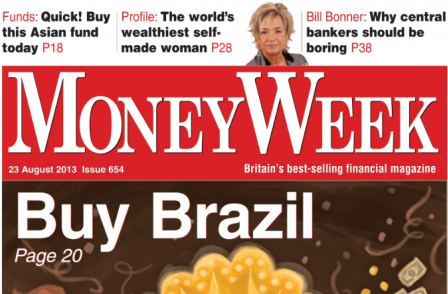
The latest figures from ABC show that most magazine titles lost sales in the first half of 2013 – but despite digital competition, some are still managing to grow print sales.
Most titles in the women’s lifestyle sector saw steep drops. The biggest names were among the biggest fallers, with Grazia down 11.6 per cent to 168,030, Glamour down 14.8 per cent to 400,371 and Cosmopolitan down 15 per cent to 300,255.
A rare grower in the sector was Women’s Health, up 1.8 per cent to 103,116.
“It’s hard to make readers part with their money,” says Women’s Health editor Farrah Storr. “So to survive in such a competitive sector we have to be different. Like other women’s magazines, we’re an aspirational brand. The difference is that we give expert advice on how to achieve that dream and so there’s real take-away value for the reader.
“I saw a woman at the gym yesterday with a page torn out of our magazine and that’s one of the most gratifying things you can see as an editor. This kind of service journalism is why we have grown by 1.8 per cent.”
Slimming World also grew its fully paid-for sale year on year, up by 4.4 per cent to 438,559
Editor Elise Wells said sales were helped by the inclusion of male readers, increased use of social media and the fact that the magazine is based at Slimming World's headquarters, in Derby. She said: "This brings a closeness that means we benefit from Slimming World’s 44 years’ experience of helping people to lose weight and keep it off. As a result, I believe we have a deeper understanding of the psychology of slimmers and the highs and lows of their weight loss journey. The magazine is an extension of the compassionate yet practical support that Slimming World offers within its groups and via its online programme."
She adds: “I think that Slimming magazines have traditionally been the poor relation of the women’s magazine sector.
“In the past few years, however, we’ve put the magazine firmly up there with the big glossies whilst continuing to use real-life slimming success stories that really resonate with readers. We insist that all our recipes work at home and not just in test kitchens.”
Finance was one of the few magazine sectors where most titles grew print sales year on year.
Weekly Investor’s Chronicle grew by 4.7 per cent year on year to 29,938, Moneyweek rose 5.6 per cent to 52,027 and largely free title Shares Magazine grew by 3.3 per cent to 15,345.
Investor’s Chronicle editor John Hughman said this was partly due to renewed market confidence.
Hughman said selling bundled print and online subscriptions had helped his circulation figures.
He says: “When smartphones and tablets came along there was a tendency to give up on print straight away. Selling print and digital subscriptions as one package has been popular for us and readers really seem to like it. There’s a lot of life left in print.”
Moneyweek editor-in-chief Merryn Somerset Webb says that editorial independence is the key to her title’s success.
“In tough economic times people need somewhere to turn to. It helps when they know they’re getting a level of truth from a magazine that isn’t in cohoots with any of the big names in finance…
“We are not in the pockets of banks, shareholders or advertisers. In fact, our advertisers are sometimes shocked when they see what’s been published.”
Other growing print titles included The Oldie, up 6.6 per cent to 45,118; Ideal Home, up 2.5 per cent to 198,075; BBC History Magazine, up 5.3 per cent to 75,193 and How it Works, up 11.5 per cent to 38,012.
The children’s magazine sector was also strong, particularly titles aimed at pre-schoolers. Fun to Learn – Peppa Pig rose 11.9 per cent to 92,992.
Ideal Home Editor Isobel McKenzie-Price says: “We live in uncertain times and it means more and more people are turning to iconic British brands such as Ideal Home magazine.
“Britishness is very popular right now with The Great British Bake Off and such, and so I think that makes a difference.
“Being part of a huge company such as IPC Media means that we can invest in quality original content that not all magazines can afford.”
Oldie publisher James Pembroke says that being forever on the lookout for new distribution deals is key to his title’s circulation success.
“Waitrose has recently begun stocking the magazine, which was a huge boost for us. We’re also lucky to have high renewal figures from existing subscribers.”
Pembroke rejected the suggestion that The Oldie’s lack of online presence could be a future problem for the title.
“Quite simply, we’ve found that digital doesn’t help at all,” he said. “Our digital presence is pretty much non-existent and that works for us.”
Email pged@pressgazette.co.uk to point out mistakes, provide story tips or send in a letter for publication on our "Letters Page" blog
